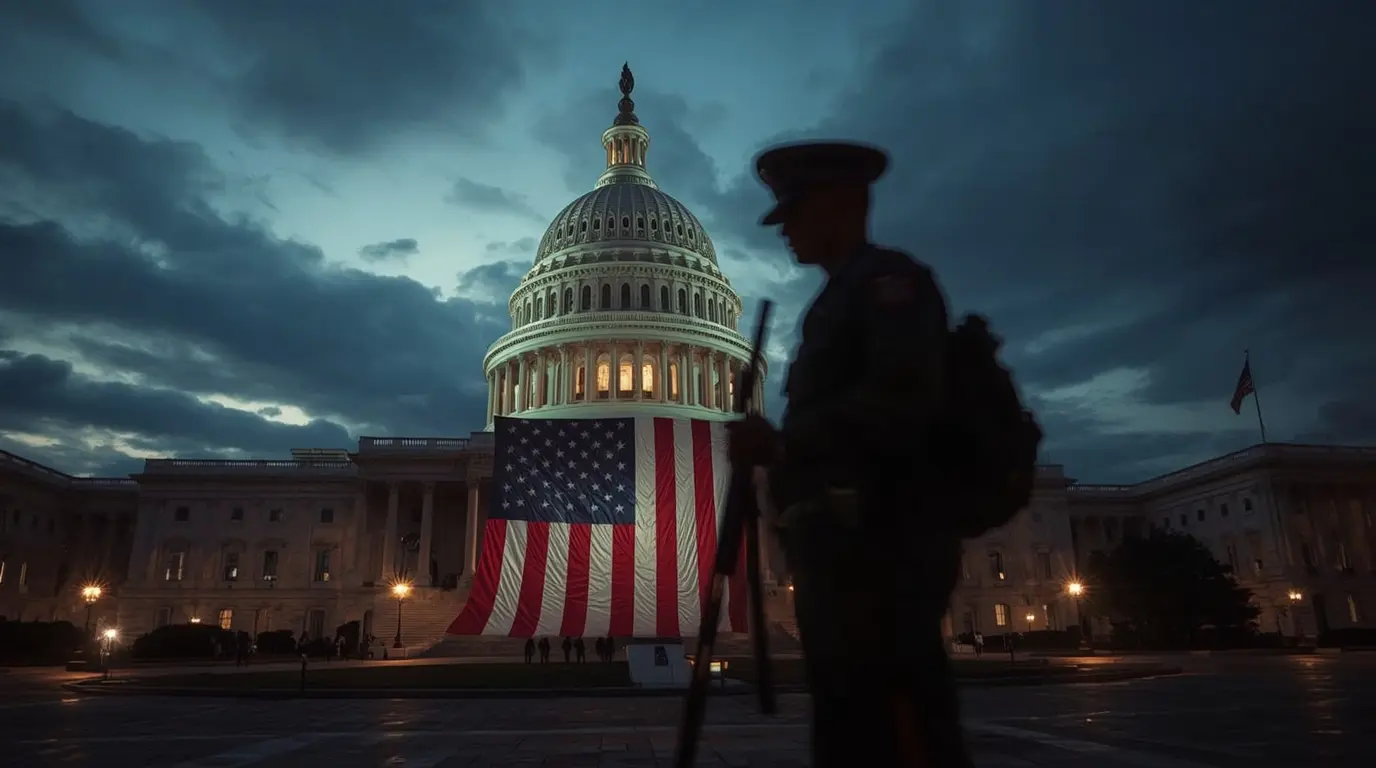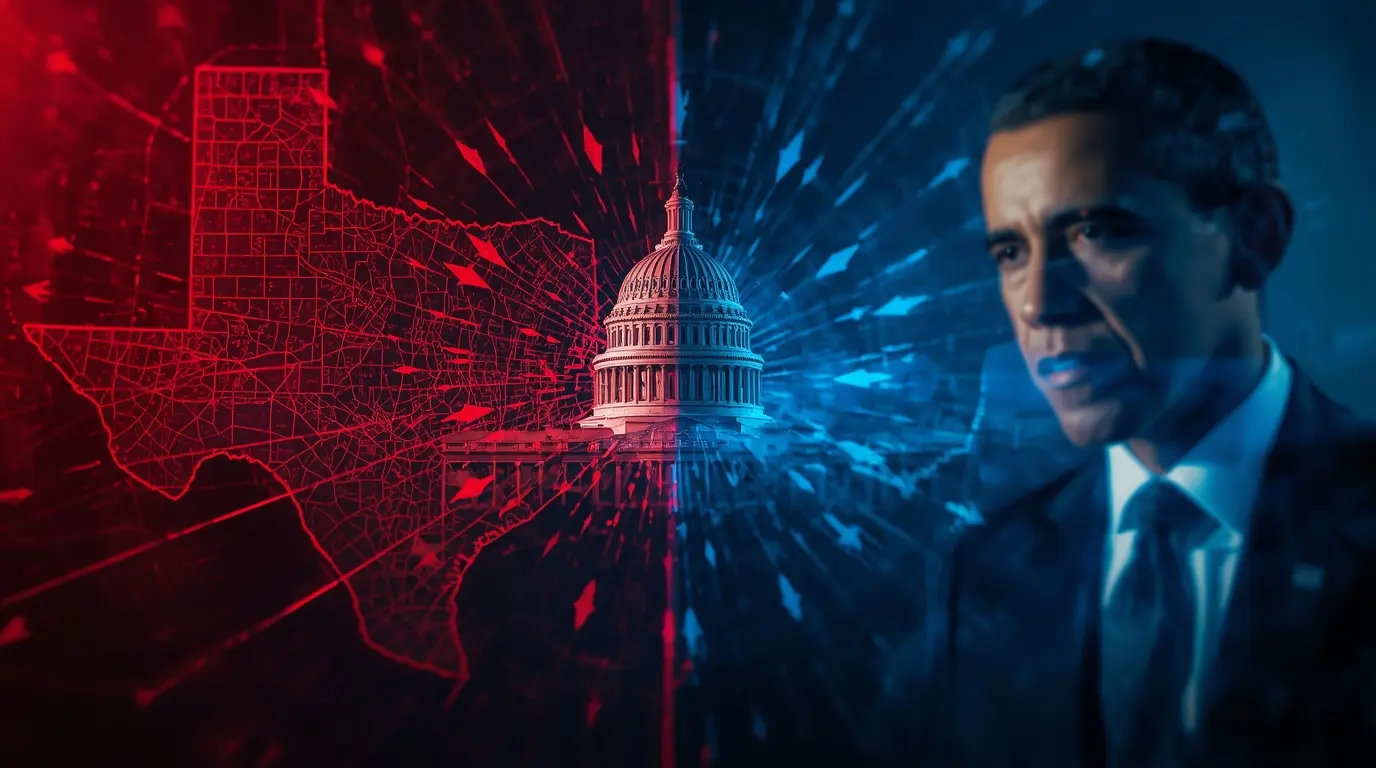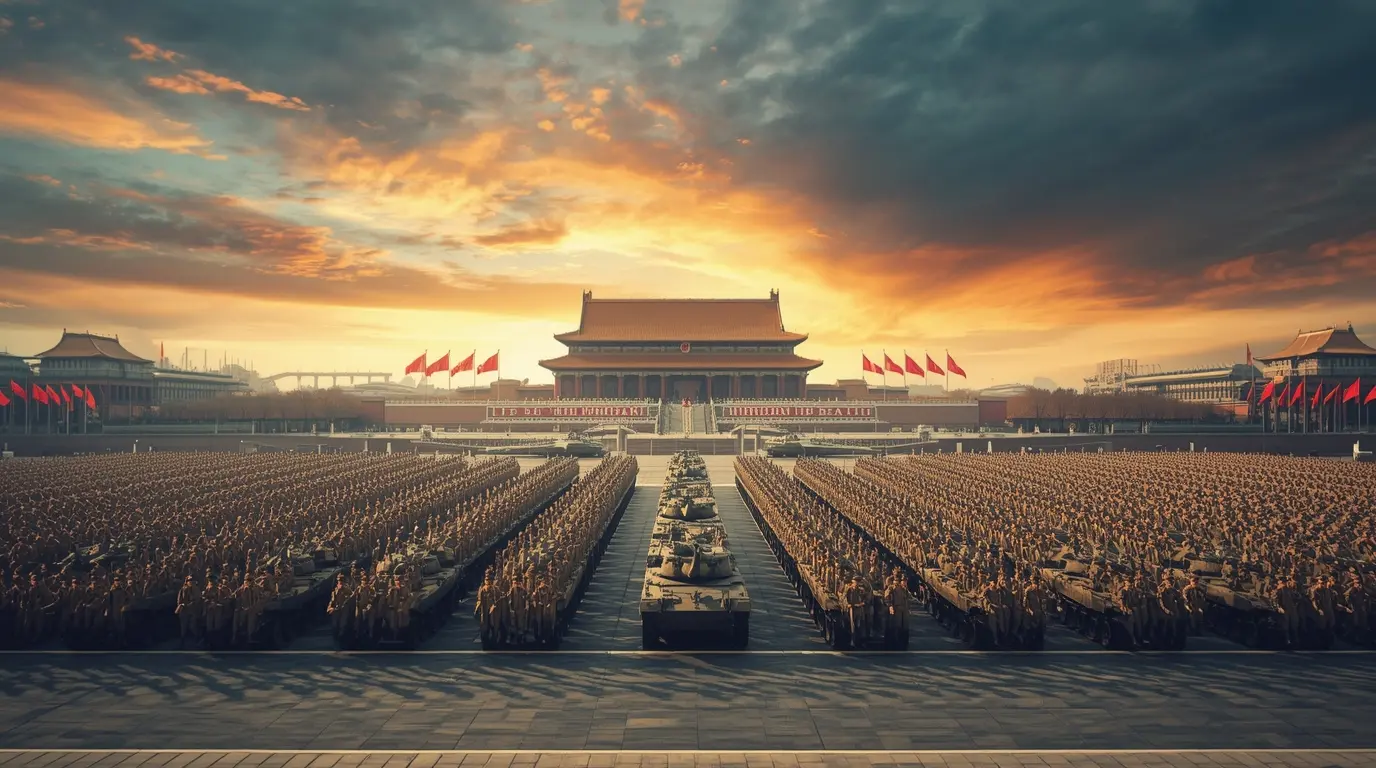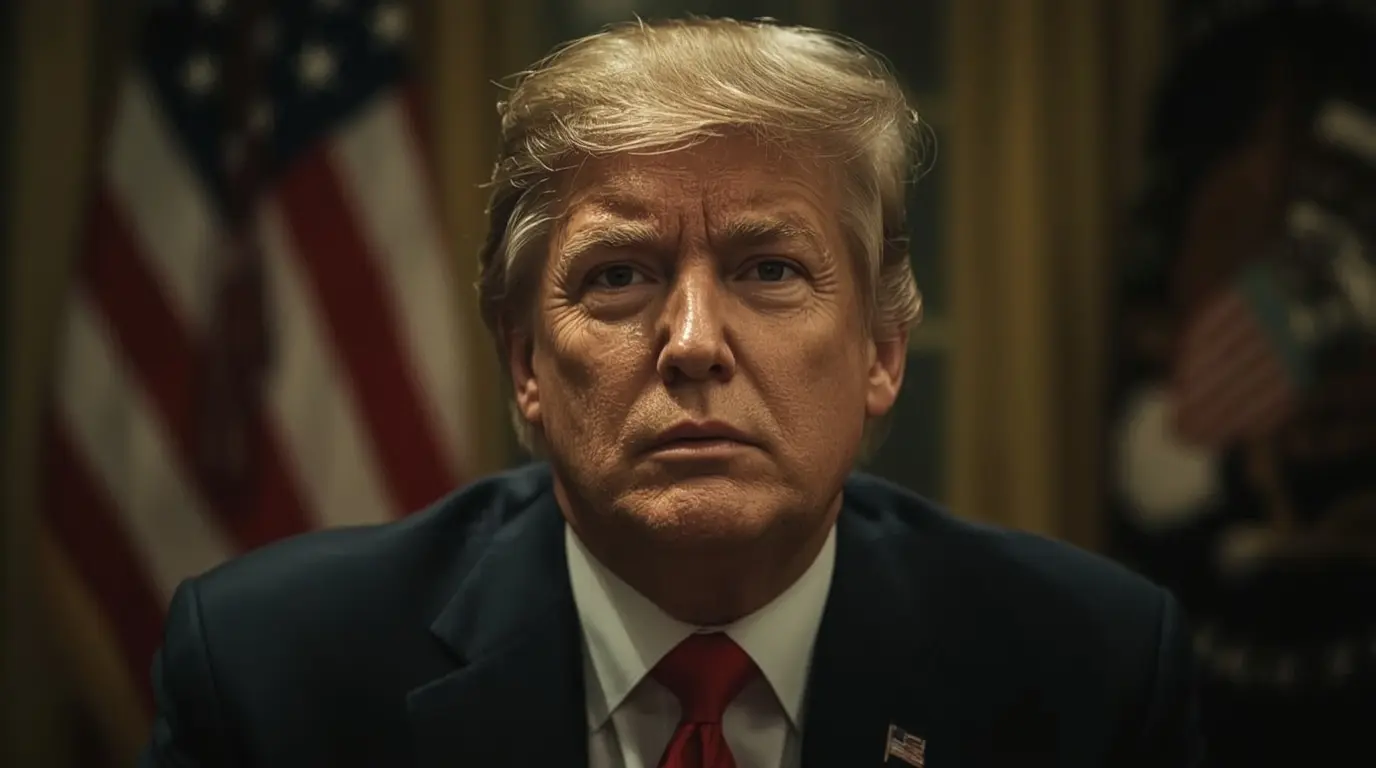The phrase “Trump Militarization” keeps popping up in heated talks about today’s American politics, especially since military units started showing up in our city streets on a more regular basis. This new way of handling domestic policy happens to raise big, nagging questions over our laws, our Constitution, and how much control the federal government should have when it steps in to help—or to enforce. What started with troops in Los Angeles and Washington, D.C., now looks to be on the verge of moving to more cities.
The Trump Militarization discussion is shifting from news chatter to a nationwide worry over democracy, who has power between the states and feds, and when, if ever, force should be used in a civilian setting. This blog rolls up the layers of how this program works, the legal smackdowns it’s facing, how the public is reacting, and what it might mean down the line.
The Trump Militarization effort met real pushback for the first time in June 2025. At that point, California’s Governor Gavin Newsom joined forces with Attorney General Rob Bonta to file a legal clash over the White House’s decision to take control of a state National Guard unit. Their bottom line: the president didn’t get the governor’s “okay,” and therefore the federal move ran smack into the Constitution. The troops sent to Los Angeles had been officially pitched as handling a rise in protests over immigration policy, yet city officials on the ground said the local police had the matter well in hand and had more than enough civilian tools in the toolbox to keep peace.
Legal scholars are warning that the Trump Militarization approach pushes the boundaries of what a President can legally do. The White House used Title 10, Section 12406 of the U.S. Code, which allows troops to be sent in to “repel invasion, suppress rebellion, or execute laws.” Critics respond that none of these situations existed in Los Angeles, where the police were already in control and no insurrection was taking place. The method reflects a dramatic growth of executive power that endangers the constitutional line between federal and state law enforcement.
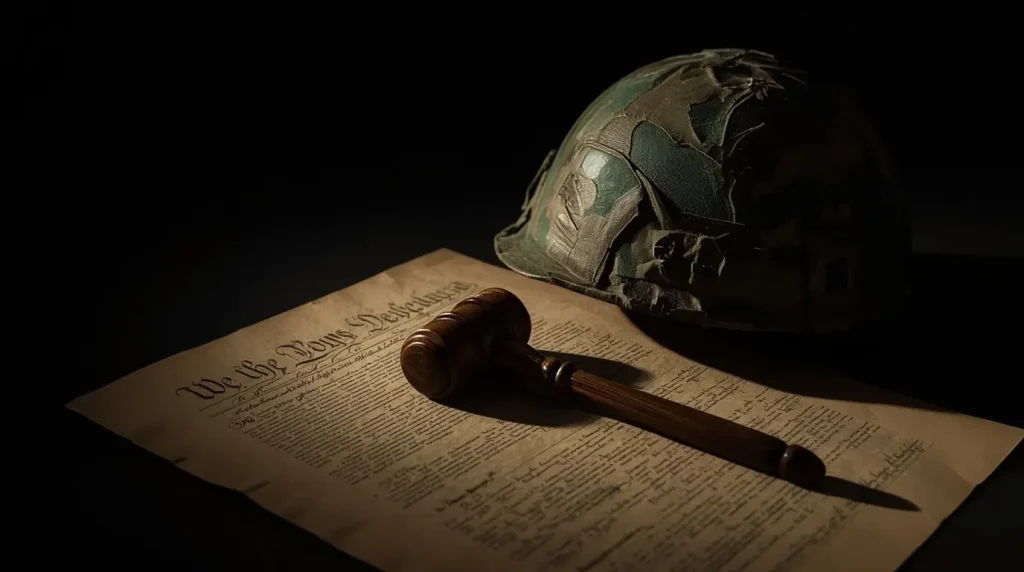
Extending the Trump Militarization Approach
After this, the approach spread to Washington, D.C., in August 2025. The federal government invoked Section 740 of the District of Columbia Home Rule Act to place the district’s police force under federal control for a 30-day period. The operation led to the detention of hundreds of people, particularly undocumented immigrants, and sent over 2,400 National Guard troops into the city. Masked federal agents, lacking name badges or identification, made street-level arrests, exacerbating fear among local immigrant communities and drawing sharp rebukes from civil rights advocates and city leaders.
The Biden administration has floated a plan to spread what is called the “Trump Militarization model” to more cities, with Chicago reportedly the next target. In a recent statement, President Trump hinted he might send troops to cities without waiting for the governor’s “okay,” saying, “We may just go in and do it, which is probably what we should do.” Such a move would disregard the long-standing requirement for state approval, stretching federal power deep into local projects.
New Orders Cement the Trump Militarization Approach
On August 25, 2025, President Trump put his name to an executive order creating special National Guard units trained in what the order describes as “public order issues.” That step gives the federal government standing forces on call to rapidly move to any city they choose. While officials frame it as a way to boost safety, critics see it as a sweeping change in mission: the National Guard is meant to help during natural disasters, not to patrol the streets as a police unit.
Retired Major General Randy Manner has labeled the Trump Militarization proposals “unneeded and dangerous.” He emphasizes that National Guard soldiers get only 3–4 hours of law enforcement training, which is tiny compared to the 4–6 months immersive training regular police receive. Shifting the Guard away from their core responsibilities not only pulls critical resources away from their primary role, like disaster response, but also siphons funds and personnel that would otherwise keep military units ready for actual combat missions. This move ultimately risks establishing the military as a routine presence in American neighborhoods, blurring the line between citizen security and military action.
People across the country are uncomfortable with Trump Militarization, external data confirms. Even though most see crime in major cities as a major issue—81% in an AP-NORC poll—an outright federal takeover of local law enforcement is still rejected by 55% of respondents. Only 36% back Trump’s initiative to seize control of the D.C. Metro Police, and a Reuters-Ipsos poll records a 46% opposition and 38% opposition margin on placing National Guard troops on city streets. These responses suggest that many Americans prize traditional civilian policing and prefer solutions that do not erase public control.
The Trump Administration’s push to militarize urban areas looks like it could be fizzling out, much like the immigration policies that stalled it back in 2017. When troops were sent to Los Angeles, polling showed the President’s immigration approval slipping about eight points. We’re now watching a replay: the president first draws big crowds for “law and order” speeches and then the numbers start to fade the minute troops start rolling through downtown. The tactic works in the short run, reverberating through a rally, but then people get uneasy seeing camouflage in front of their grocery store. Similar pattern, similar fallout.
Dig deeper, the militarization map of American cities actually shows the playbook, a pretty tough playbook. Opinion study after study show the deployments are largely political theatre, selling “safety” when the actual effect is to paint Democratic city rivals in a skittish color. When teams of officers in tactical gear flood a Portland street or a Chicago neighborhood, the optics are delicious for algorithm-driven social media bits that live for “law and order” clicks.
Yet crime data from same cities run by Republicans tells a different story: rates, numbers, alarms, everything’s pretty much the same. The President gets to strut like the only superhero in a city full of way-finding directions, while Democratic mayors play the role of sullen sidekicks when, in reality, authority on the sheriffscape zone is empty even of notice.
As voters look toward the 2026 midterm cycle, the timing of Trump’s militarization pushes stands out. Trump himself has all but telegraphed his playbook, insisting that “crime will be the big subject of the midterms.” That statement underlines the possibility that the Trump militarization is not just a publicity stunt but a calculated effort to tilt the electoral landscape in Republicans’ direction. By deploying federal agents in Democratic cities, the strategy serves twin objectives: dramatizing to his supporters that law and order is under assault and quietly pressuring political adversaries.
Rooted in a history of executive overreach, the militarization trend threatens to rewrite the rules of American democracy. Amherst’s Professor Lawrence Douglas draws a stark parallel to the “prerogative state” model, a framework first outlined by Ernst Fraenkel, which asserts executive authority that no longer obeys the law and is governed solely by the whims of those in power. Each instance of militarized action carries a layer of publicized legal justification. However, Douglas warns that the cumulative effect pushes democratic boundaries to the breaking point, preppy breaking point.
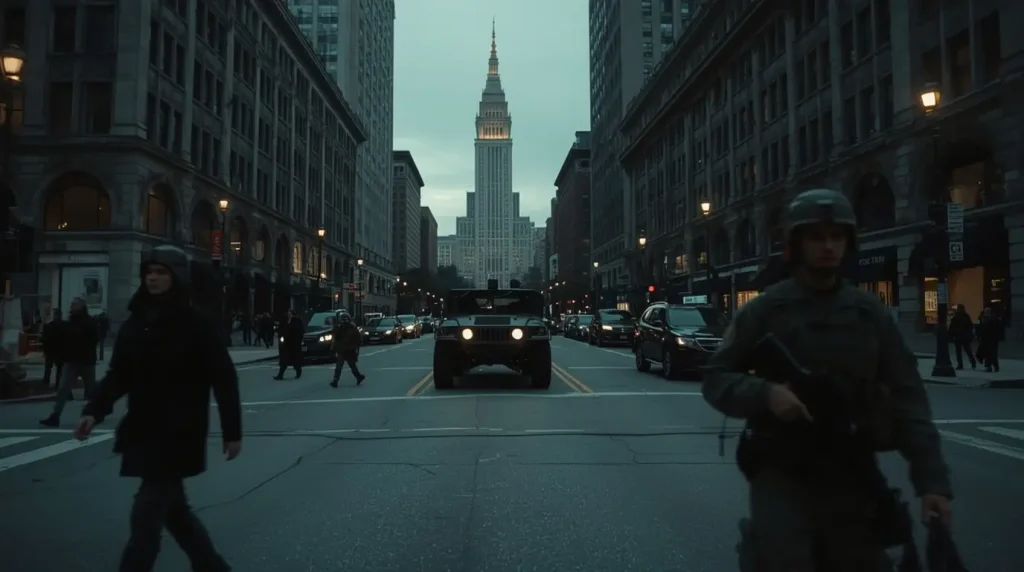
The rise of militarized policing under the Trump administration isn’t just an operational shift; it threatens the century-old rule against deploying military forces on American streets. The Posse Comitatus Act of 1878 lays out a clear ban, but the Insurrection Act tacks on a few, narrow shortcuts. Right now, we’re seeing those shortcuts widen as the White House seeks to bend the law without breaking it.
What happens next matters. This administration is testing the legal envelope more than ever, and once a precedent forms, it can be recycled by any future White House, turning a tactical choice into a relatively permanent practice.
Effects have already spilled over into everyday American life, offering a bitter preview of the broader risk. In Washington, D.C.— melting pot, tourist magnet, and upon occasion, a flashpoint— immigrant neighborhoods describe a low-grade panic that keeps mothers checking the clock before letting kids walk to school. The lure of a simple morning errand is offset by the fear that an ICE or a Customs agent might step into view, and that the family that leaves the house might be the family the system separates.
Chief of the Metropolitan Police has already observed a 60% drop on foot traffic. Some storefronts cough up only credit for mercy, and the city’s drivers, who once slowed to a mild crawl at lunchtime, now pick up enough speed to absolve the shade of the only city the law enforcement stalemate lets them.
Critics say the new Trump-era Militarization tactics are turning Washington, D.C., into a kind of police state. Scenes of masked agents yanking drivers from cars, driving cyclists off their bikes, and wrestling bystanders to the ground—often without showing ID or offering a reason for the arrest—are now the norm. Analysts warn that the strategy is backfiring by provoking the very unrest officials say they are trying to prevent. More troops on the streets tend to heat the atmosphere, not cool it.
The outlook for the Trump Militarization playbook is troubling. Legal rulings and citizen pushback have not halted the spread; instead, they have been treated as hurdles to be sidestepped. Meanwhile, administration officials are dropping hints that deployments may soon spread to cities like Chicago, New York, Baltimore, and Oakland. National Guard units now operating under executive order could quickly become a regular part of the landscape, effectively locking military patrols into the everyday business of policing Americans.
What worries democratic institutions the most is the fear that Trump Militarization may spill into the most sacred act of our democracy: the vote itself. Professor Lawrence Douglas lays out a haunting scenario: what if the president decides to “protect” polling places from a claimed insurrection by calling in troops under the Insurrection Act? The idea of armed soldiers inside or even outside our polling stations is terrifying. If Trump Militarization were to happen, it wouldn’t just be a police or federal presence—it would allow the federal government to intervene in a way that could sway tabulated ballots.
Conclusion: The Moment of Decision for Trump Militarization
What started as federal troops patrolling American streets now stands as a test of the very bloodstream of U.S. governance: the balance between a president’s asserted powers, states’ sovereignty, and the democratic guarantees that were meant to keep the political center chance. The White House calls it public safety; his critics call it public coercion. Cases and complaints have begun to stack up in the courts. Demonstrators have gamely confronted armored vehicles and federal agents. And yet Trump Militarization shows no sign of pulling back. The next likely flashpoint is, of course, an election that could remind us of everything precious and permissible.
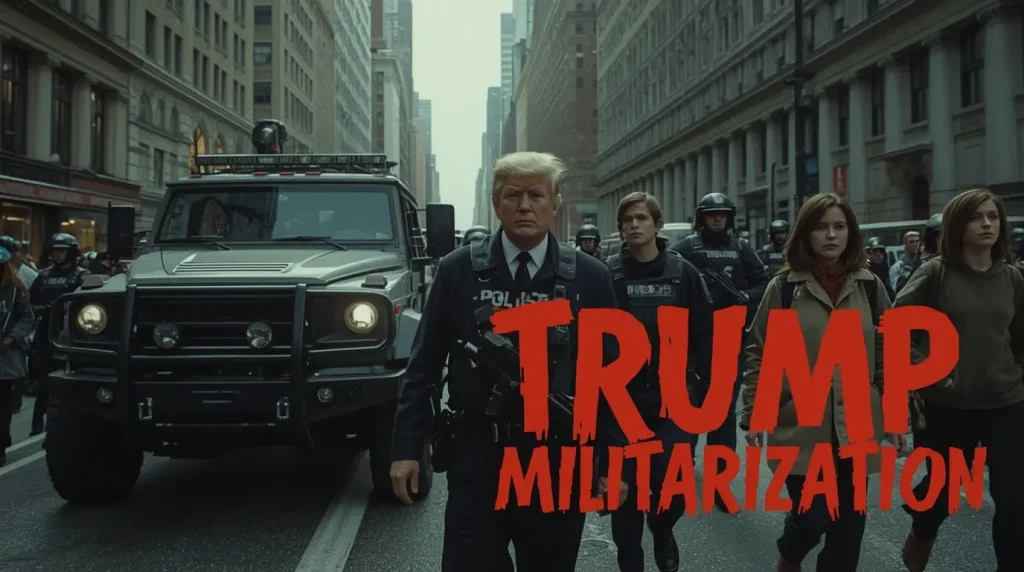
With the 2026 midterms on the horizon, the Trump Militarization strategy is expected to stay at the forefront of national politics. How this plays out for our democracy will hinge on how well court cases hold up, whether voters keep pushing back, and whether our other branches of government step up to curb unchecked executive action. More than just a policy issue, the Trump Militarization debate questions what place the armed forces should have within a nation governed by its people.
For more incredible stories of everyday news, return to our homepage.

